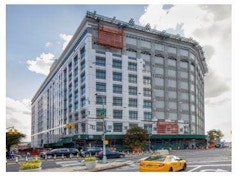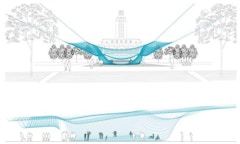
Multi Layer Facades
The history of high performance facades and glazing has been a tale of attempting to manage the conflicting requirements of, on one hand inviting

The history of high performance facades and glazing has been a tale of attempting to manage the conflicting requirements of, on one hand inviting

Silicone materials have a long history in high performance building projects. Known for durability, they can reduce a building’s carbon footprint by

Kintsukuroi, the Japanese art of repairing broken pottery with powdered precious metal, is a practice of celebrating the life and history of an

Tokyo’s prestigious Ginza District, is home to innovative architectural design. One of the most recent examples is Ginza Six (GSIX), the largest


Recent years have seen an increase in the use of insulated glazing units (IGUs) in spandrel applications to visually blend the appearance between the
Today, there is a shift towards sustainable simplicity in facades, embracing material innovations and thermal design strategies for long-term

The recently completed Capital One Hall performing arts center located in the Washington DC metro area is defined by a pleated exterior of glass and

Center Three is a 100-year-old, one million square-foot building in Long Island City, New York that was constructed over the course of one year. It

It may be difficult for modern man to believe that what is known as handicraft was once the advanced manufacturing of the day. These techniques were


The performative and visual aspects of curved forming/bending thin “formable” planar materials is explored. Early tests for deflection indicate that

Responsive facade system is considered a major component of high-performance building envelope that is capable of responding to environmental stimuli

As the first phase of a $4 billion dollar, 180-acre, 60 building government preservation project in Washington DC, this case study reviews the
Historical published weathered annealed failure data consisting of 13 samples were collected and glass failure prediction model surface flaw

Environmental and socio-economic benefits of sustainable preservation have become apparent most recently in the restoration of the historic former

Building design criteria requires that government buildings be designed for a variety of extreme loads including blast, hurricane, and impact

The historical focus on reducing the carbon footprint of a building has recently shifted to include more emphasis on embodied carbon, the carbon